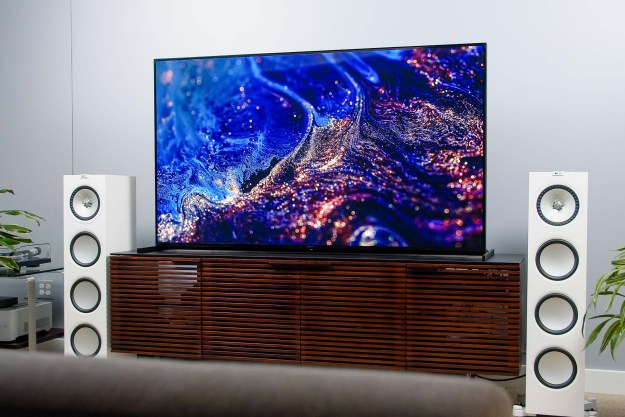
- Incredible brightness
- Excellent backlight control/black levels
- Spot-on color
- Superb motion
- Great sound
- Lacks high-end gaming features
- Very expensive
The Sony Master Series Bravia XR Z9J is one of the most aspirational TVs you can buy today. Sure, LG has its $30,000 Z9-Series 8K OLED TV, but among LED/LCD TVs, the Sony Z9J is the most expensive commercially available TV you can buy. With a street price of roughly $6,500, the 75-inch Sony Z9J makes Samsung’s $2,600 flagship 75-inch 8K Q900R look like a budget buy by comparison.
Do you need the Z9J? No. Do you want the Z9J? Yes. Will you ever own one? I doubt it. Here’s the thing, though: None of that really matters.
Allow me to explain.
Pure Sony flex
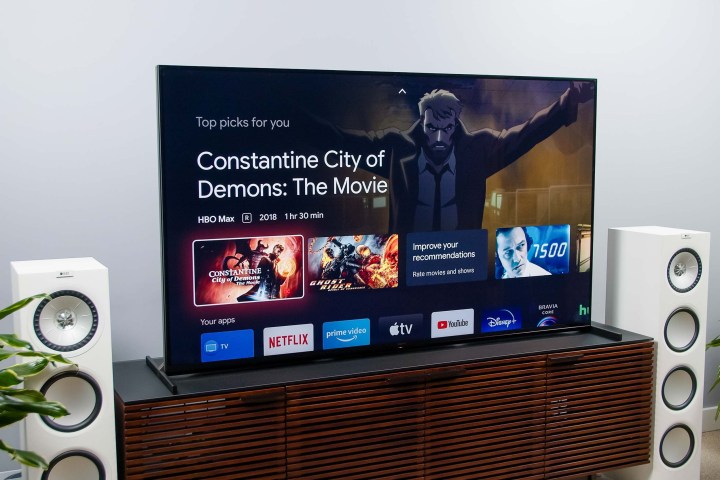
The Sony Master Series Z9J is the successor to a lineage of Z-series TVs that have represented the best that Sony can make. When we talk about “setting the bar,” that’s what the Z-series is meant to do. If the Z9J could speak on Sony’s behalf, I imagine it would say something like, “Hi. I’m the Z9J. I’m the best LED/LCD TV that Sony has ever made and I’m the best LED/LCD TV that money can buy. Sony knows TV engineering better than any other brand and I’m the proof.”
That Z9J — such a blowhard. But does it have the chops to back up those claims? For the most part, yes it does.
While the Z9J doesn’t quite achieve TV nirvana (for an inanimate object, it seems to have too much sense of self), it comes very close. I’ve reviewed TVs that can get brighter, TVs that can get blacker, and TVs that have more advanced gaming features, but on balance, the Sony Z9J bests them all with the right … well, balance of performance in all the most critical areas. Perhaps more importantly, though, the Z9J is just fun as hell to watch.
Oh, and the fact that it is an 8K TV? That’s just a bonus.
So, how does Sony do it?
The XR processor is key to the Z9J’s outstanding performance.
Sony Bravia XR Z9J details
While we reviewed the 75-inch XR75Z9J model, our review also applies to the 85-inch XR85Z9J model.
| Screen Size | Model Number | MSRP |
| 75-inch |
XR75Z9J
|
$6,499 |
| 85-inch | XR85Z9J | $8,999 |
Again with the processor

Sony’s latest generation of image processing chips is called Cognitive Processor XR. For the sake of brevity — and no doubt much to Sony’s chagrin — I will subsequently refer to it more simply as “the XR processor.” This processor is key to the Z9J’s outstanding performance. In some ways, I get how it works, and in others, I’m completely baffled. Look, I’m not an engineer, I just play one on TV.
What I understand is that the processor is supposed to understand how the human eye/visual system works and then actively maximize a TV’s performance by using cognitive intelligence and executing a bajillion processes per second. It’s not just about how fast this processor can make decisions, it’s about how meaningful those decisions are. For example, if we have an image of a cheetah nestled in the grassy plains of Africa on the screen, with the cheetah in the foreground and the grasses in the background, the XR processor will likely pour its power into resolving fine detail in the cheetah’s coat for every frame in which it appears rather than try to add detail to a blurred-out background of grass. That’s smart decision-making.
Another way to express the importance of this TV’s processor: If the Z9J were a car, the XR processor would be its engine. Several other brands build TVs using many of the same parts as found in the Sony Z9J, but they don’t look like the Z9J because they don’t have the Z9J’s engine. In other words, you could build the shell of a McLaren 720S to spec, right down to the wheels, tires, mirrors, seats, and steering wheel — and it would look exactly like a McLaren 720s. But toss a Toyota Camry engine under the hood, and that car has zero hope of performing anything remotely like a McLaren 720s.
Since I’m now dug into this car metaphor, let me go ahead and beat it to death. If I were to slap a McLaren 720s engine into our 720s-looking shell but give the car a Chevy Malibu drivetrain and suspension … well, you get it. It still isn’t going to perform like the McLaren 720s. Likewise, Sony’s XR processor needs some other premium mechanics in order to pull off its magic. That brings us to the backlight system.
Proven backlight system

Sony used to call its fancy backlight system “Sony Backlight Master Drive.” That’s marketing speak for Sony’s Secret Sauce lighting system. While LG, Samsung, and TCL are touting mini-LED backlighting systems, Sony is sticking with a tried-and-true system that remains a mystery to all who are unable to physically pick it apart and analyze it — it just ditched the fancy name. Ask Sony what’s going on behind the curtain and it will reply with something along the lines of, “We’re not saying, but it looks great, doesn’t it?”
Fair enough, Sony. You won’t say. And you’re right. It does look great.
I don’t know how it is that Sony can use a fraction of normal-sized LEDs with far fewer dimming zones than the competition and somehow come up with a TV that looks better than TVs with much more impressive specs on paper, but the company pulls this trick off year after year. The result is excellent backlight control with minimal blooming and halo effects, excellent black levels, very impressive shadow detail, and truly impressive brightness — all where it counts.
That leads us back to the XR processor. The backlight system does what it does when it needs to do it thanks to intelligent decision-making by the XR processor. At least, that’s what I think is happening. In the end, what I see is a stunning TV, and since Sony is so secretive about its approach, all I can do is make an intelligent guess.
Masterful color
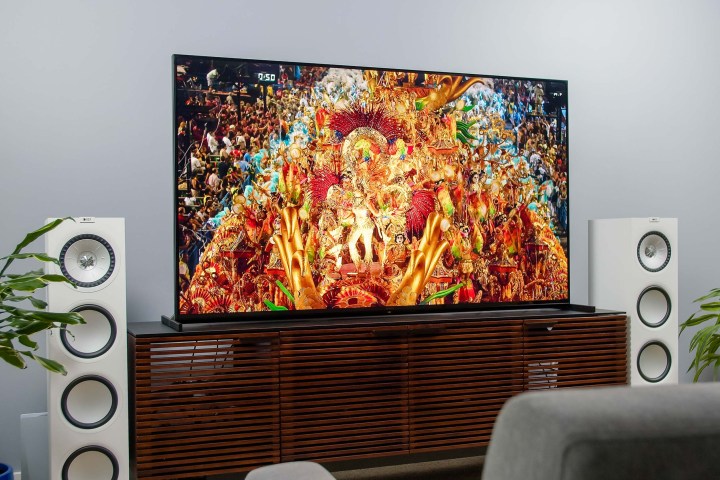
Since it isn’t enough for me to simply state that the Z9J has impeccable color reproduction, I use a Spectracal C6 colorimeter profiled to an X-rite i1 Pro spectrometer and Calman Ultimate software to measure TV performance. In the area of color, the Z9J is an exemplary performer. I have only seen two other TVs with out-of-box color accuracy that can stand up to the Z9J, and both of those TVs were also made by Sony (the A90J and A80J).
Impeccable motion

Historically Sony’s strong suit, cinematic and smooth motion with a minimum of artifacts is one of the Z9J’s more admirable performance attributes. There’s a fine line between abating motion blur and introducing heavy-handed motion smoothing that makes an image look artificial or invokes what I consider to be the dreaded “soap opera effect,” and I have yet to see a brand tread that line as deftly as Sony does. Although to be candid, many of Sony’s premium TVs perform just as admirably in this category at a much lower price.
Superior upscaling
Since there is precious little 8K content to enjoy (thanks, YouTube, for offering some impressive 8K footage to enjoy on 8K TVs, albeit highly compressed), it’s important that any 8K TV be capable of upscaling 4K, 1080p, and 720p material to 8K resolution without making it look worse than it would in its native resolution. While I feel that most TV manufacturers offer solid upscaling, I have to hand it to Sony for being a cut above the competition in this area. Images simply look cleaner on Sony 8K TVs, no matter the original resolution. But no TV is a miracle-worker, and I maintain that no TV 75 inches or above looks good reproducing 720p cable or satellite content.
Stellar sound
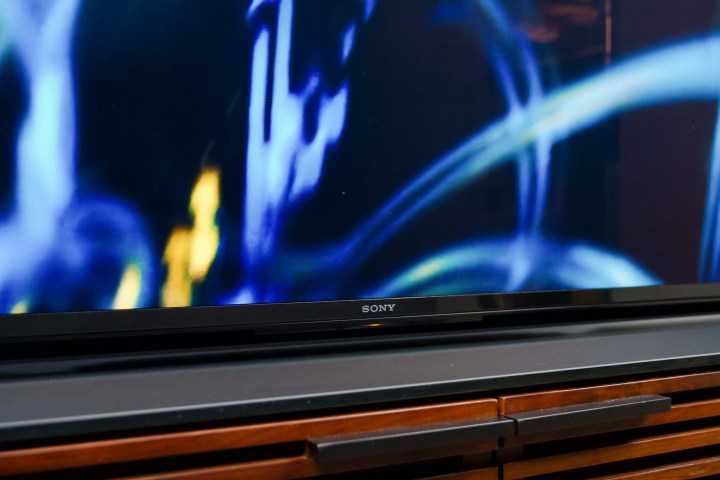
For those who regularly read my TV reviews, I will sound like a broken record here. I think a premium TV like the Z9J deserves an equally premium sound system. Really, a TV only needs to not sound terrible to be passable in my book. After that, an impressive, immersive audio experience is best delivered by a quality soundbar (we have more than a few amazing suggestions for the best soundbars you can buy), or better yet, a multi-speaker audio system driven by an A/V receiver (an admittedly dying breed of sound system).
All that said, the Sony Z9J delivers a surprisingly satisfying audio experience, with punch, grunt, clarity, and musicality. It is one of the best-sounding TVs you can buy. And it should be at the price.
Performance metrics
In SDR with no adjustments to the custom picture mode (auto local dimming set to medium and peak luminance set to off). I measured 389 nits peak brightness from a 10% window. With auto local dimming set to low, I measured 431 nits, and with that setting at high, I got 381.
With auto local dimming fixed at medium and peak luminance set to low, I got 784 nits. With peak luminance at medium, I got 1422 nits, and set to high, I got 1902 nits. That’s for SDR, folks. That is an insanely bright SDR image. You shouldn’t take this TV outside, but you could take this TV outside and still see it in full sun.
For
I reckon the Z9J is probably capable of pushing 4,000 nits peak brightness in small
Just for grins, I went to Vivid mode, and it zoomed up to 3,600 nits. Wow.
Consider this: Measuring a 10% white window test pattern isn’t a fair measurement of real-content performance. I reckon the Z9J is probably capable of pushing 4,000 nits peak brightness in small
Is there anything it can’t do?
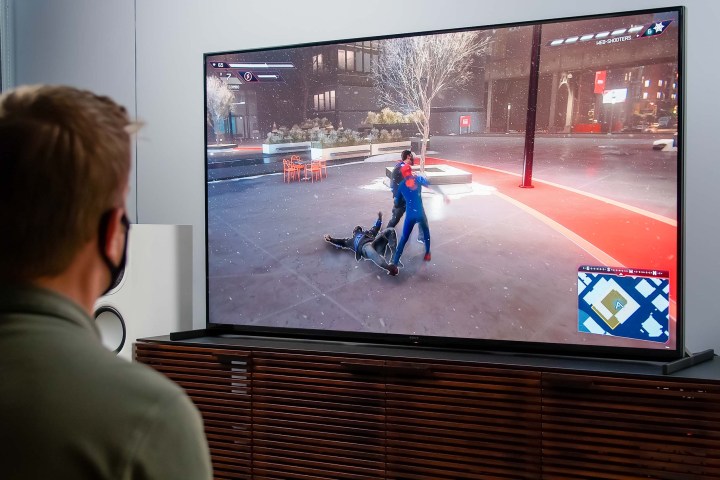
Given the mountain of praise I’ve heaped on the Z9J, it’s fair to ask what its weaknesses might be. It has a few.
First, the Sony Z9J isn’t the best choice for gamers who want the latest features supported by next-gen
While I don’t see hardcore gamers going for the Z9J with so many other stellar gaming TV options available at a fraction of the cost, I think anyone who pays this much for a TV should get everything. All the bells and whistles. The Z9J falls short in this regard.

Truthfully, though, I think the Z9J’s greatest weakness is that it can’t be enjoyed by very many people’s homes. To say it is cost-prohibitive is a gross understatement. Thankfully, I expect the Sony X95J is going to get 95% of the way toward the Z9J’s performance at a much more approachable price (relatively speaking, of course — it’s still quite expensive). Does the Z9J really have to be so pricey? Such is the harsh reality with luxury products, I suppose.
Why I love it

Until I saw the Sony Z9J, I would have told you the TV I would buy this year would be either the LG G1 Gallery Series OLED or the Sony A90J OLED — and it would be a tough call between the two. Now that I have seen this TV, I’m just not sure. No TV has tempted me away from OLED like the Sony Z9J. I think it is the
I spent hours simply watching it because it was such an incredible delight to behold.
The greatest endorsement I can give this TV is that I spent hours simply watching it because it was such an incredible delight to behold. Sure, I probably should have been doing other work, but I gave myself a pass and watched for pure enjoyment because I knew it would be another year or so before a TV like the Z9J crosses my testing room again.
After all those hours spent watching, I’m left wanting to watch it some more. I’ve said that about precious few TVs in my life.
Our take
Is there a better alternative?
In terms of picture quality, I feel only the LG C1 and G1 OLED TVs, the Sony A90, or the Samsung Q900R can hold a candle to the Z9J, and for a variety of different reasons. Sadly, though, the blanket answer to this question is yes, because the price of this TV is impossible to justify.
How long will it last?
The Z9J is held back only by its lack of support for some features associated with HDMI 2.1, and those are relegated to advanced gaming concerns. In terms of product quality and relevance, the Z9J will still be talked about five years or more from now, just as the Z9D is today. Sony offers a one-year parts and labor warranty against defects on TVs used for in-home purposes.
Should you buy it?
If you have the means, knock yourself out. The Z9J is a stellar TV. Just be sure to invite me over for a watch party.
Editors' Recommendations
- Sony debuts the Bravia 9, its brightest 4K TV ever, alongside new 2024 models
- The best 8K TVs for 2024: from Samsung, LG, and Sony
- 8K TV: Everything you need to know about television’s future
- Hisense debuts its first 8K Roku TV, the 75-inch U800GR
- TCL’s 8K 6-Series mini-LED TVs are shockingly affordable





